
Words by Jessica Bumpus
Photography by Paul Read
From her home studio in North London on one of the hottest days of an exceptionally hot summer, Frances Pinnock is contemplating over Zoom just how to explain her work: particularly her latest pieces, leather sculptures that came from her dreams. It was during lockdown, when life was “all sort of stressful and weird”, she recalls, that she began to have strange dreams, which in turn “fed into drawings and images that I recorded at the time.” She would make a quick sketch, something gestural to “act as just a mental trigger”, she explains. Her current work is now bringing to life the ideas she had experienced in sleep. Pinnock, a recipient of the Leathersellers’ Award at Cockpit Arts in 2019 and 2020, studied Modelmaking at the Arts University Bournemouth, graduating in 2014. With the help of a Leather Associated Student Grant from the Leathersellers’ Foundation, she will embark on an MA this September at the Royal College of Art, and her intention while there is to realise her work – which until now often explored vessel-like forms – on a larger scale and “take it out into the room more” so she can have space to experience the sculptures.
Frances had been “really interested” in extreme footwear as body modification while studying, and in her final year designed a pair of shoes based around the work of Kandinsky. It was a chance to use the workshop machinery and to play around with vegetable tanned leather while bringing in hand-stitched construction too, following an evening class in traditional hand-stitch construction. “Old school, all in your lap, there’s no machinery”, she says. And so she began to develop her craft. It’s one that requires a supreme amount of patience, careful consideration and some serious looking after of one’s hands, owing to using sole bend leather from the tannery J & FJ Baker. This is the solid, sturdy and hard leather you find on the sole of your shoe or which builds up the heel. J & FJ Baker leather is typically used in traditional bespoke shoemaking as it is of the highest quality.
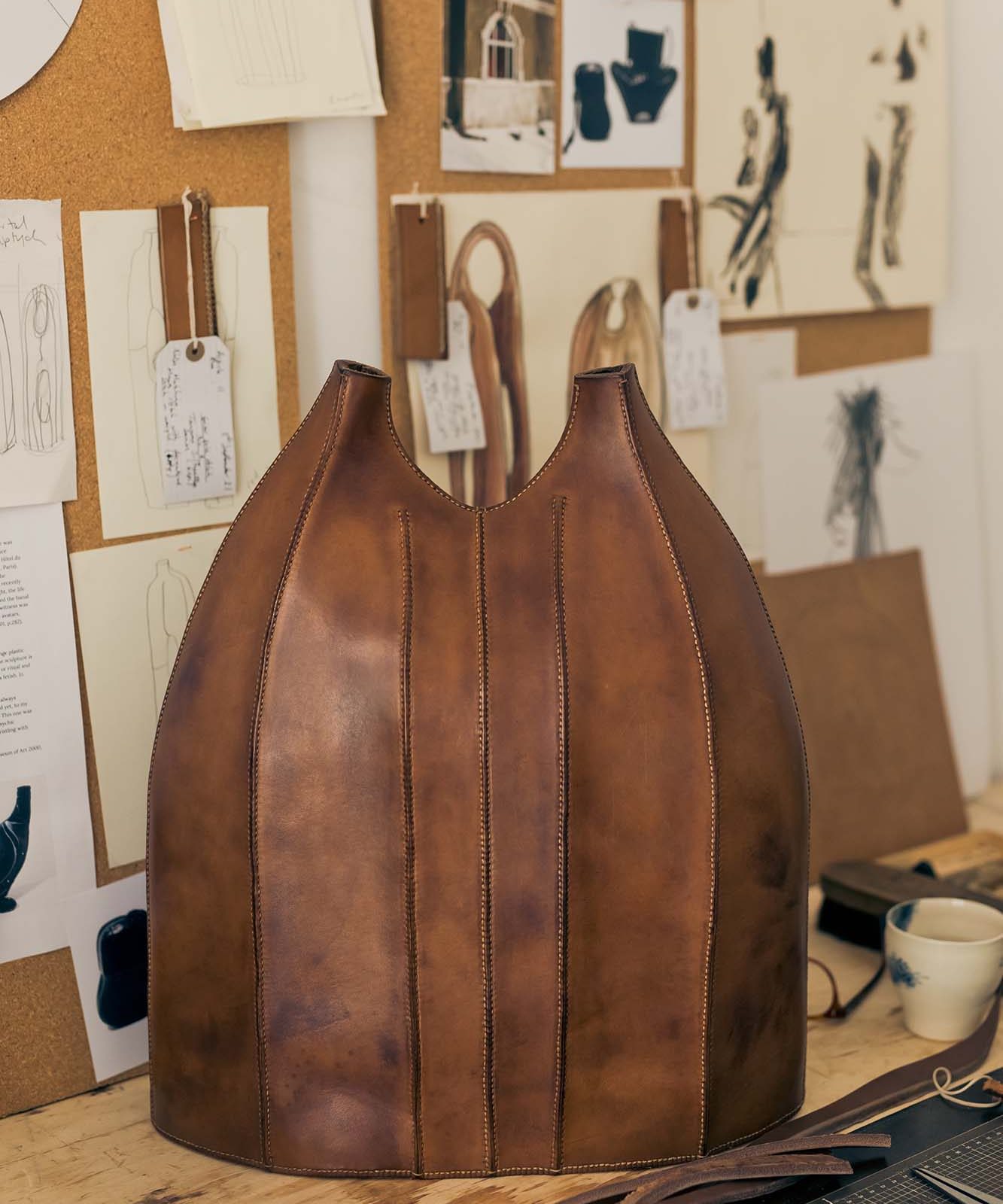
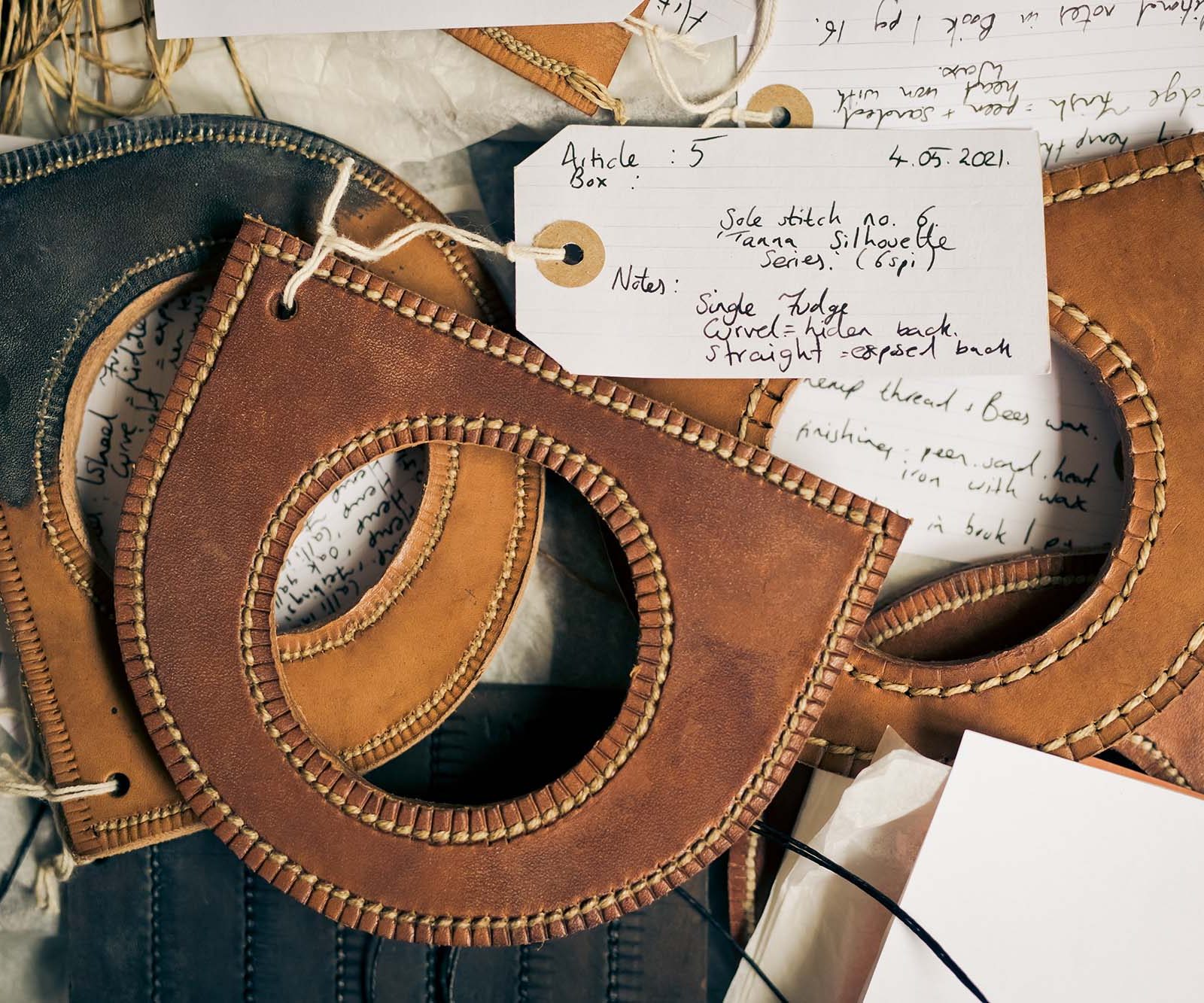
“Vessel pieces measuring about a metre high or more have taken around 80 hours of stitching. She can do six hours a day.”

Of her work, she explains: “I’ve spent quite a bit of time making vessel pieces and trying to translate the stitch constructions that we use in shoe making into making objects that are beyond a shoe.” She’s a fan of the sculptors Dorothea Tanning and Barbara Hepworth, the latter of whose work she recalls seeing on summer holidays in Cornwall. Pinnock describes her own sculptures as being a little like “headless torsos”, which might sound a little uncomfortable, but you see what she means. “Subtly figurative” is another way she puts it. “Often related to the body.”
What she likes about leather – and specifically the type she uses – as a material is that “it’s immediately sort of ancient; it responds.” The leather she uses, taking 14 months to make, means that “you have to be really present when you work with it.” Mistakes are costly. “It’s kind of something that makes you really slow down whilst you’re working with it.” Preparation is an important part of the process.
“When I get it in, it’s rock hard. It’s like wood”, explains Frances of the leather. “And I have to soak it for 24 hours and if I leave it to dry out to about 50 per cent at that point it’s mellow so it’s malleable. You can cut it because you’ve then got a working window before it then dries out and you have to re-soak it. So it’s sort of learning what I can do within those parameters.”
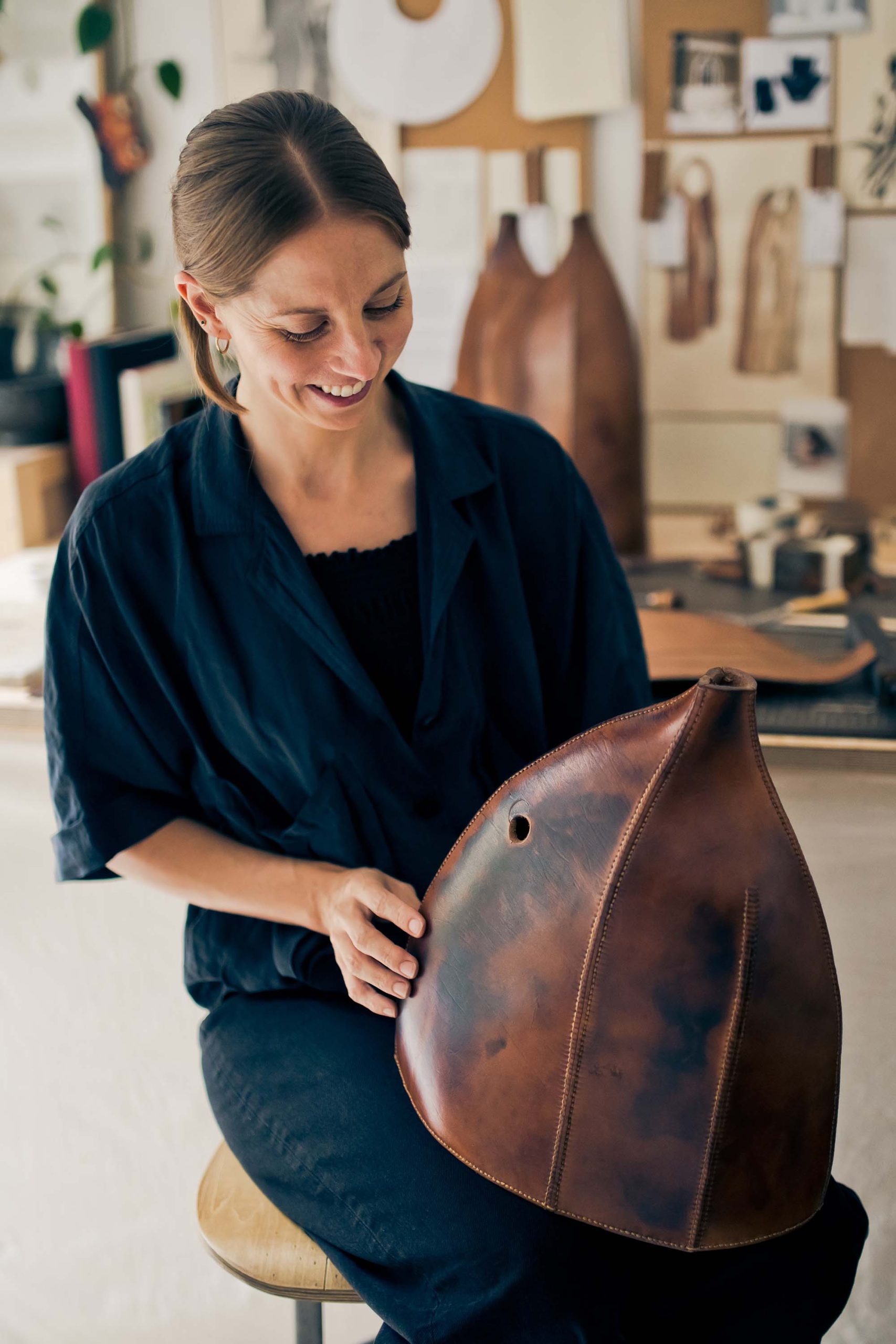
She pulls a pebble-shaped, frisbee-sized piece into view, which took a couple of days’ work with four hours of stitching to create. Vessel pieces measuring about a metre high or more have taken around 80 hours of stitching. She can do six hours a day at the most, and during summer it’s harder, so she’s learning when and when not to do pieces. “The stitching is really tiring”, she says. But it’s something she loves. “Just to be able to sit and stitch the work and sort of working out the different stitch instructions that could create the forms.” She makes the holes individually and stitches each one as she goes. And what about looking after her tools, let alone her own hands? Taking breaks, stretching and ice cubes factor into it.
She is facing rather a creative conundrum currently: “There’s a lot of work in my head that I need to get out. And that’s kind of the point where it’s quite frustrating at the moment. Because my process is so slow, I know that if there’s something that comes up, it’s not going to be realised for at least two years.” She laughs. “I’m trying to be patient.”
But she also finds herself in a unique position. “I think this particular method, sole bend, hasn’t really been shown, so I’m not sure how it’s going to be received on the other side. It’s been really well received within contemporary craft exhibitions – people are very interested in the processing.” There’s an element of trusting the vision and seeing where the stitches take her next.
Read More
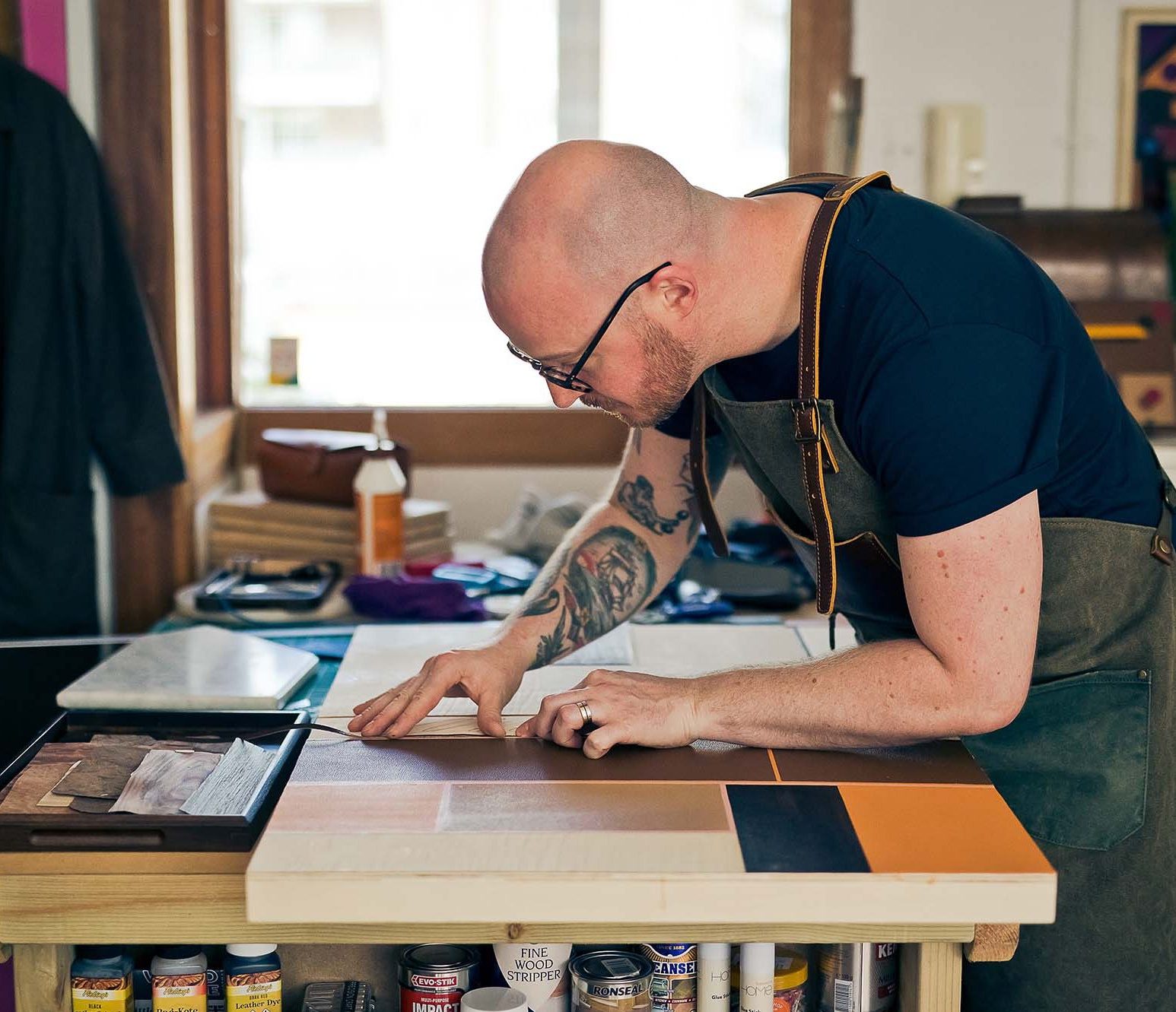
Magic Eye
Carl Fox creates puzzle-like pieces of interior art by using offcuts from luxury leather fashion brands.
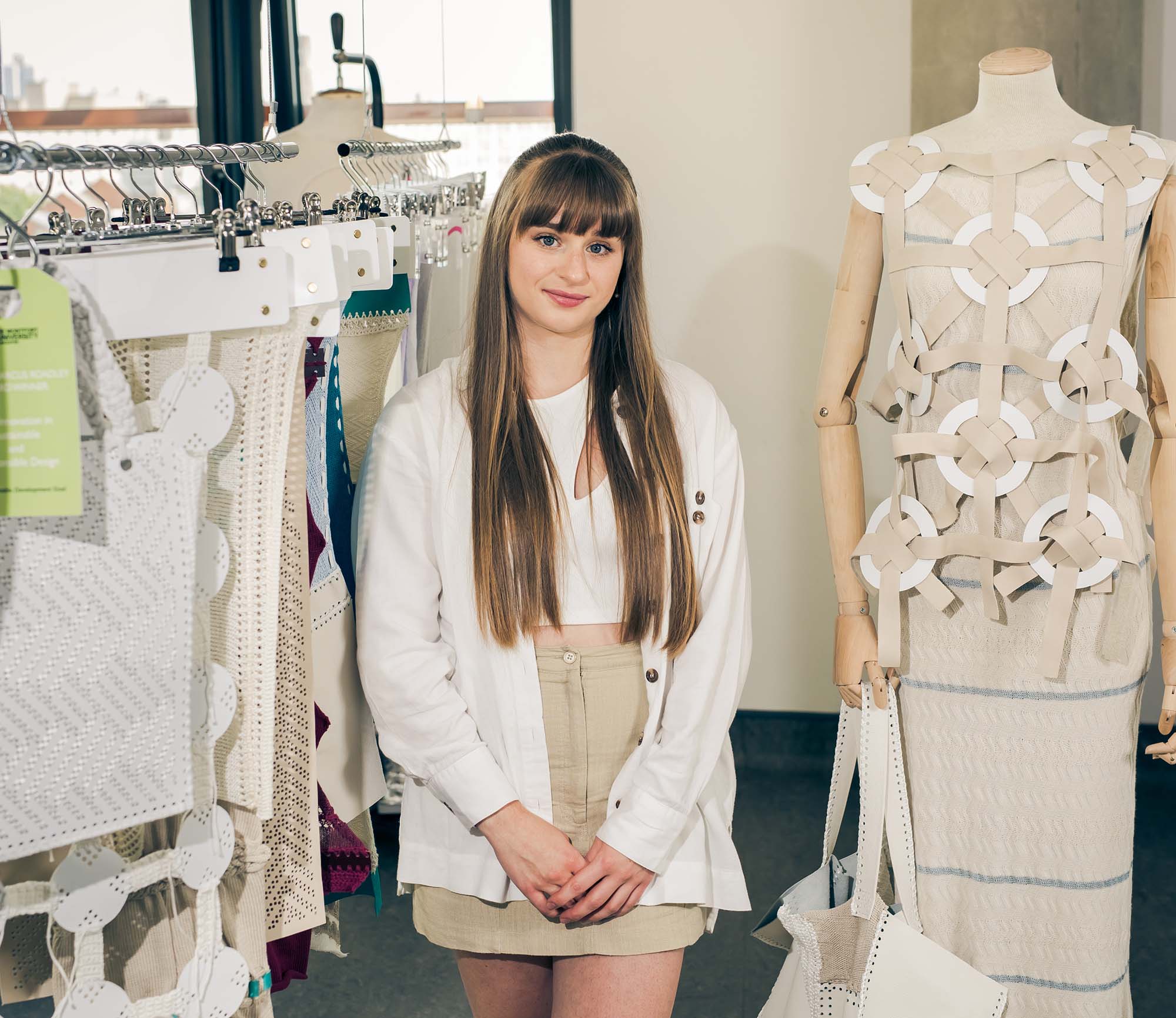
Fashioning History
For an inspired project at Leicester’s De Montfort University, students of “Artifacts Live” are drawing on the lessons of historic leathercraft to create the designs of the future.
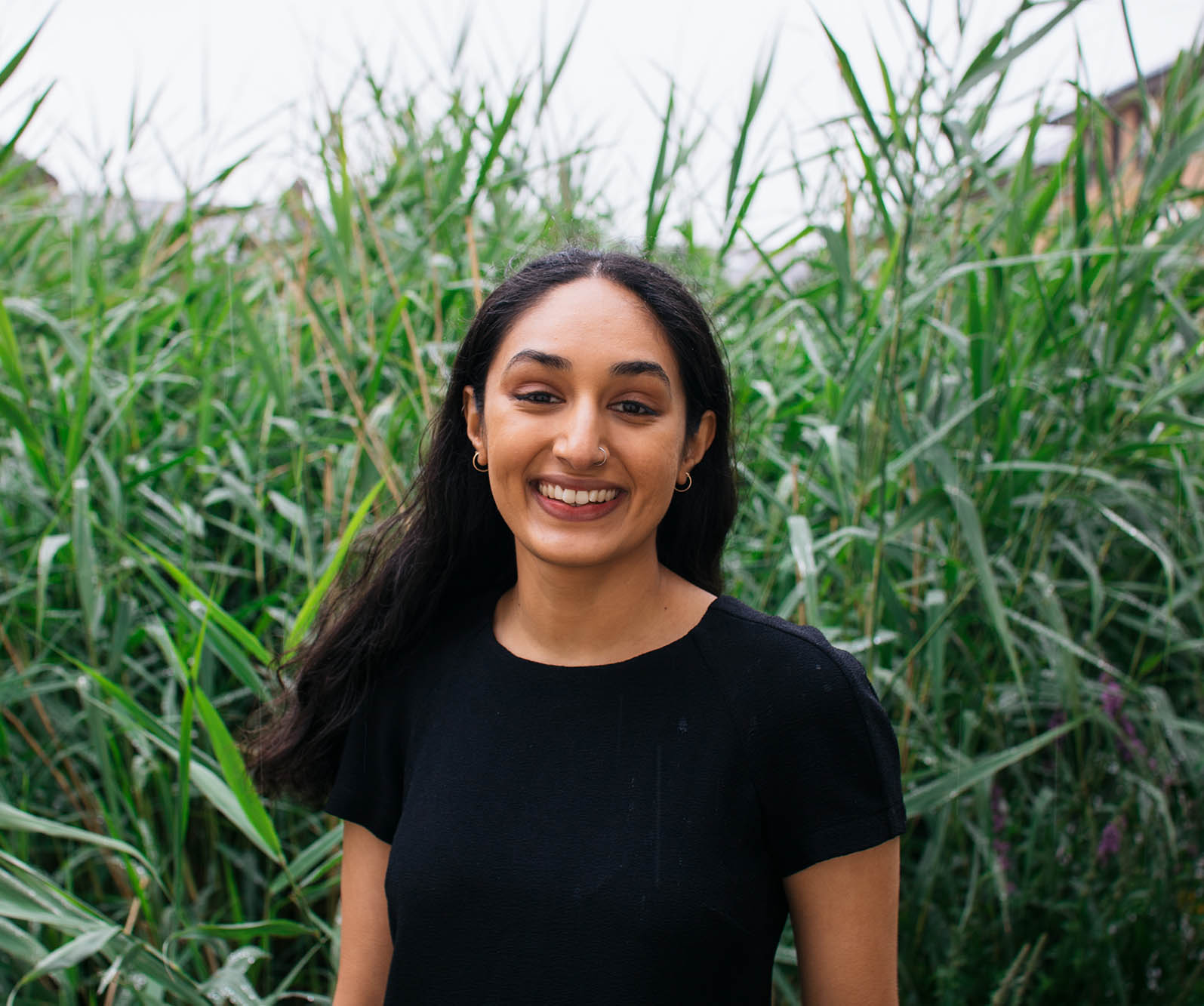
Misha Patel - Turning the Tide
Oxford PhD student and Leathersellers’ Scholar Misha Patel heralds a new generation of engineers coming of age at the dawn of the climate emergency.